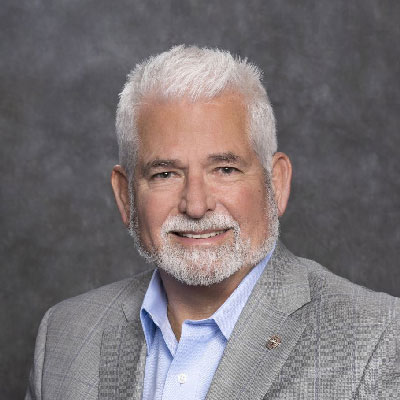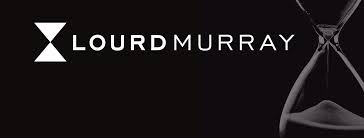Create Your Legacy
Don't judge each day by the harvest you reap but by the seeds you plant.
- Robert Louis Stevenson
Why Choose Us?
There are many benefits of establishing a fund at Legacy Endowment:Types of Funds
The Legacy Endowment makes it easy for individuals and charities to accomplish their goals and leave their positive mark on the community today and for generations to come.
Unrestricted Funds
Donor-Advised Funds
Field of Interest Funds
These funds allow donors to specify a field of interest to be supported, without specifying individual charities. The foundations then make grants to appropriate local organizations serving the designated need.
Charitable Remainder Trust (CRT)
Designated (restricted) Funds
These are established by nonprofit organizations in the interest of building their own endowments. Income from these funds provides the organizations with a source of revenue they can rely on, increasing self-sustainability and financial security.
These funds are ledged to support the community foundation itself, specifically day-to-day administrative operations. Donors set up this type of fund as a means of assisting the foundations in all of their projects, building up infrastructure and reducing the fees charged for fund management. Community foundations offer useful solutions for civic-minded donors looking to make a difference through philanthropy.
Scholarship Funds
How We Invest Your Funds
The Legacy Foundation currently distributes more than $500,000 annually for scholarships and to local charities. Since its inception, the Foundation has directed more than $9 million to those charitable endeavors as specified by our donors. One of the Foundation’s most important responsibilities is our stewardship of charitable funds entrusted to our care by donors large and small. We have a broadly diversified investment portfolio that is structured to first, preserve the capital of each gift, and secondly, to grow the gift sufficiently to maintain purchasing power and provide for future needs.Investment Advisory Team
Investment Philosophy and Purpose Statement
Investment Policy Statement (IPS)
One of the Foundation’s most important responsibilities is our stewardship of charitable funds entrusted to our care by donors large and small. We have a broadly diversified investment portfolio that is structured to first, preserve the capital of each gift, and secondly, to make annual distributions to designated beneficiaries, and then, to the gift sufficiently to maintain purchasing power and provide for future needs. The IPS is designed to ensure prudent management of Foundation assets consistent with the long-term interests of its stakeholders while adhering to the State of California Uniform Prudent Management of Institutional Funds Act (UPMIFA).
The assets of the Foundation represent a pool of donations from individuals and organizations. The donations may be (a) unrestricted in purpose with investment earnings to be spent at the discretion of the Foundation, (b) restricted in purpose with the principle and/or investment return to be distributed as designated by the donor, (c) charitable remainder trusts and gift annuities, (d) pass-through, or (e) any other asset of the Foundation, subject to the provisions of the Articles of Incorporation and Bylaws of the Foundation.
The Foundation’s investment program is defined in the various sections of the IPS by:
- Stating in a written document the Committee’s attitudes, expectations, objectives and guidelines for the investment of the Funds’ assets.
- Setting forth an investment structure for managing all assets of the Foundation. This structure includes various asset classes, investment management styles, asset allocation and acceptable ranges that, in total, are expected to produce a sufficient level of overall diversification and total investment return over the long-term.
- Providing guidelines for any investment managers that moderate the level of overall risk and liquidity assumed in that investment portfolio, so that all the Foundation’s assets are managed in accordance with stated objectives.
- Encouraging effective communications and understanding regarding investment performance between the Committee, the Board, and investment managers.
- Establishing formal criteria to monitor, evaluate, and compare the performance results achieved by investment managers on a regular basis.
- Complying with all applicable fiduciary, prudence, and due diligence requirements that experienced investment professionals would utilize, and with all applicable laws, rules, and regulations for various local, state, federal and international political entities that may impact the Foundation’s assets.
The Foundation’s objectives, established in conjunction with a comprehensive review of the current and projected financial requirements, are as follows:
- Maintain a constant funding support ratio
- The Investment Committee is tasked to grow the Foundation’s invested assets in accordance with UPMIFA to maintain the level of programs and services currently provided. This can only be met if sufficient total return is reinvested and sufficient new funds are added to keep pace with cost increases and program expansions.
- Maintain the purchasing power of the Fund.
- Upholding the level of services and programs in relation to average cost increases is vital and necessary. This requires establishing an annual spending target of 5.5% (average of 4.5% for programs and 1% for administrative costs) and a target return rate of 7.5% (average of 4.5% for programs, 1% for administrative costs, and 2% estimated core annual inflation), at a minimum.
- Follow a spending policy based on portfolio performance.
- Adhering to a portfolio performance-based policy allows the committee to (a) map out a long-term investment strategy, and (b) employ modern investment management techniques.
- Apply a smoothing practice to mitigate the effects of short-term market volatility on spending.
- Since investment returns may vary dramatically from year to year, spending a constant percent of the Foundation’s market value could cause instability with fund distributions. Therefore, the following smoothing practice is to be applied:
- Moving Average – The annual spending rate will be determined by considering the average of the past three years (previous 12 quarters) of the Foundation’s endowment funds’ market values, in conjunction with a snapshot of the fiscal year-end audited financial statements.
For the purposes of planning, the time horizon for investments is greater than ten years. Capital values may fluctuate over shorter periods and should be viewed with appropriate perspective. Though the risk of principal loss does exist, the historical asset class return data suggest that the risk of such loss can be minimized with the long-term investment mix employed under this IPS. Additionally, the board believes a moderate risk position is appropriate and rates their own risk tolerance as moderate. The board intends that the portfolio should be managed in a manner that seeks to achieve the stated rate of return while limiting principal fluctuations over established horizon.
For a copy of the full IPS, please complete the CONTACT US form. Additionally, we invite you to review our professional advisors by clicking here.
Limitations and Restrictions
The following categories of investments are not permitted for investment without the Board’s prior written approval:
- Unregistered or restricted stock
- Commodities and Futures Contracts
- Private placement debt – except as may be positioned in a commingled fund which does not specifically emphasize private placements
- Tax exempt securities – either state or federal
- Conditional sales contracts and mortgages
- Uncovered options
- Hedge fund or venture capital partnerships
- Trust Deeds
- Short sales or margin purchases or purchases with debt either directly or within a co-mingled fund
- Transferable certificates of participation in business trusts and limited partnerships
- Securities in firms associated with Committee or Board members, outside investment managers or their respective parents, subsidiaries or affiliates
- Securities in violation of California law
- Collectables- including art, coins and stamps
- Any investment which would give rise to Unrelated Business Income Tax “UBIT” as defined by the Internal Revenue Code
Investments in companies doing business not in accordance with the policy statements of the Investment Committee may be permitted if they are consistent with an existing trust instrument, upon approval of the Board of Directors.
Rebalancing
The investment managers are responsible for asset allocation rebalancing with the board-adopted acceptable ranges, as needed. Periodically, the committee will review its target allocations to confirm or recommend adjustments.
Form 990
If you are searching for IRS Form 990, you can find that at our Guidestar/Candid Profile.







